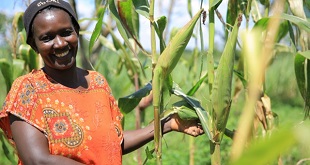He backs government’s borrowing from the World Bank because of low interest rates that hover around 2-3% per annum as well as from the National Social Security Fund [which he said has a lot of ‘idle’ cash].
“But people must have trust that government will pay,” he said.
Similarly, Isaac Nkote, a senior economics lecturer at Makerere University Business School (MUBS) said any debt is bad but government cannot do without borrowing.
Like his fellow economists, Nkotetold The Independentthat the current debt status is high.
He, however, challenges those in government to efficiently manage the borrowed funds well so as not to stifle development projects that are ongoing and those in the pipeline.
Nkote also urges government to start thinking of reducing borrowing but after conducting thorough research to inform this move.
He said part of the ways government can manage debt, is by improving on the absorption capacity of borrowed funds and use it in time so it can yield a return as soon as possible and support efforts of debt repayment.
The latest state of the economy report released by the Ministry of Finance, Bank of Uganda and Uganda Bureau of Statistics quoted provisional total public debt stock (at nominal value) as at end December 2017 at Shs37.9trillion, representing an increase of 9.4% relative to June 2017.
The same report says that including committed but undisbursed loans, the ratio of total public debt to GDP would be closer to the threshold.
“This poses a risk of higher exposure or failure to meet external debt obligations in case of exchange rate volatility and slow growth in exports,” the report reads in part. It adds that high debt may become a drag on economic growth by discouraging public investment due to the high debt service costs.
International agencies including the International Monetary Fund and the World Bank which work closely with government on fiscal and monetary policy issues have previously raised similar concerns and cautioned authorities not to spike debt levels.
Kasaija’s confidence mood
Kasaija, however, argues that since the current debt to GDP is lower than the 50% threshold, it is still sustainable.
“Our public debt is therefore sustainable over the short to medium term, even when we include the financing required for priority projects in the pipeline,” he said.
In the new budget, Kasaija said domestic debt re-financing will amount to Shs5.2trillion up from Shs4.9trillion for the current financial year.
Connected to this, domestic borrowing which is being discouraged by the private sector leaders due to competition issues will spike to Shs1.7trillion in FY2018/19 from Shs954bn for the current financial year.
Going forward, Kasaija said in line with the medium term debt strategy, the country’s borrowing strategy is to contract concessional loans while restricting commercial loans to the financing of infrastructure and self-financing projects – which would help to ensure long term debt sustainability.
In his speech he sounded optimistic that debt repayment will be made easy by a growing economy whose outlook he described as ‘positive’.
He said economic activity is projected to expand by at least 5.8% in the next financial year and increase to 7% per annum in the medium term.
Kasaija said growth will be supported by stronger cash crop yields, through reorganised agricultural activities, information communication technology, financial servicesand efficiency gains from public infrastructure investments.
 The Independent Uganda: You get the Truth we Pay the Price
The Independent Uganda: You get the Truth we Pay the Price



